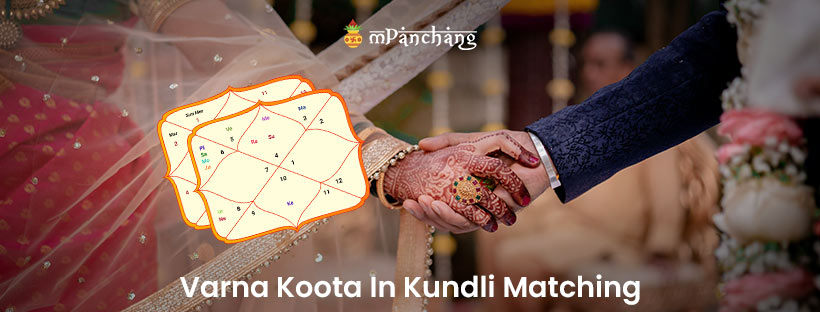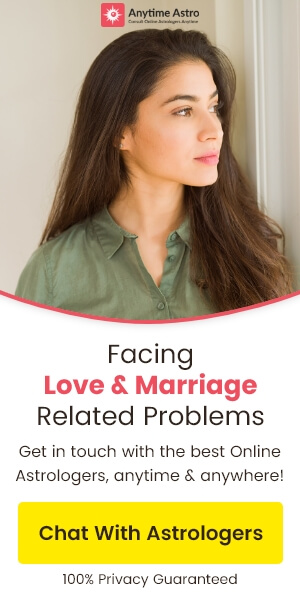In Vedic astrology, Kundli matching plays a vital role in determining the compatibility between a prospective bride and groom. One of the fundamental aspects of this ancient system is Varna Koota, which assesses the compatibility of the couple’s temperaments and ego, ensuring a harmonious relationship. Varna Koota is one of the eight essential aspects, or "Ashtakootas," used to evaluate marriage suitability, alongside other Kootas.
In this blog, we will discuss the significance of Varna Koota, its role in Kundli matching, Varna meaning in astrology, and how it helps determine compatibility for a successful marriage. We will also explore remedies for mismatched Varna scores and the impact of Varna Koota on overall marital harmony.
Ashtakootas in Kundli Matching
Before we jump into the specifics of Varna Koota, it is important to understand the concept of Ashtakootas, the eight aspects used for Janam Kundli matching. Each Koota assesses different compatibility factors between the bride and groom. The points assigned to each Koota are as follows:
- Varna Koota - 1 Point
- Vashya Koota - 2 Points
- Tara Koota - 3 Points
- Yoni Koota - 4 Points
- Maitri Koota - 5 Points
- Gana Koota - 6 Points
- Bhakut Koota - 7 Points
- Nadi Koota - 8 Points
While the other Kootas are also crucial in assessing different aspects of compatibility, Varna Koota forms the first step in evaluating whether the bride and groom have a balanced temperament. Let’s understand the Varna Kuta meaning in detail.
Decoding Varna Koota
The term Varna Koota is derived from the ancient Indian social structure, which divides individuals into four primary categories based on their qualities, temperaments, and roles in society. These categories are known as the four Varnas: Brahmin, Kshatriya, Vaishya, and Shudra. Each individual is classified into one of these four Varnas based on their Moon sign, which is determined at the time of birth.
Varna Koota assesses how the innate characteristics of the bride and groom align with one another. This is done by comparing their respective Varnas to understand if their temperaments and ego can coexist harmoniously within the marriage. Varna Koota plays a significant role in ensuring that there are no personality conflicts or clashes in ego that could potentially disrupt the relationship.
In astrology, the Varna classification is an important indicator of a person’s mental disposition, temperament, and spiritual inclinations. This classification determines the basic nature and behavior of the individual, offering information regarding their outlook on life and relationships. Each Varna has a unique significance in astrology. Let us discuss them.
Type of Varna Koot
There are four types of Varna Koota in astrology:
- Brahmin - Represents intellect, wisdom, and spiritual orientation. Individuals with this Varna are philosophical, disciplined, and deeply focused on spiritual growth.
- Kshatriya - Represents leadership, bravery, and action. Natives with this Varna tend to be ambitious, assertive, and driven by principles of justice and protection.
- Vaishya - Indicates commerce, resourcefulness, and practicality. People with this Varna focus on material success, excelling in business, finance, and resource management.
- Shudra - Represents humility, service, and nurturing. Individuals belonging to this Varna are creative, cooperative, and prioritize relationships and service.
In Kundali matching, the groom’s Varna is compared with the bride’s Varna. The match is considered favorable if the groom’s Varna is equal to or higher than the bride’s. If the groom’s Varna is lower than the bride’s, the match is considered a mismatch, which results in a score of 0 for Varna Koota. A mismatch Varna in kundali means ego clashes or power struggles and can disrupt the harmony of the marriage. Now, let us understand how this works in kundali matching.
How Does Varna Koota Work in Kundali Matching?
Varna Koota is assessed by examining the compatibility of the temperaments between the bride and groom. If their Varnas align, it indicates that the individuals will complement each other’s nature, which will foster harmony in the relationship. A mismatch in Varna typically suggests that one partner may dominate or assert themselves more than the other, leading to potential ego clashes and misunderstandings.
The maximum score for Varna Koota is 1 point. A score of 1 indicates compatibility, while a score of 0 indicates a mismatch. However, it is essential to note that Varna Koota is only one factor in the overall guna milan process, which covers several other Kootas that assess various aspects of the relationship.
Significance of Varna in Astrology
The significance of Varna in astrology lies in its ability to predict the temperament of the individuals involved in the marriage. By analyzing the Varna of both partners, astrologers can determine whether their mental dispositions will harmonize or create friction. The goal is to ensure that the partners’ egos are compatible, thus preventing any personality clashes that might interfere with the relationship.
While Varna Koota is significant, it is not the sole determinant of a successful marriage. It provides valuable information regarding the potential dynamics of the relationship, but other Kootas like Maitri Koota, Yoni Koota, and Nadi Koota, play a more prominent role in assessing emotional, physical, and health compatibility. However, in cases where a mismatch is observed, there are several remedies that can help balance the energies and ensure a smooth marital journey.
Remedies for Mismatch in Varna Koota
If there is a mismatch in Varna Koota, it is advisable to follow certain remedies to reduce any potential problems:
- Pujas and Rituals - Performing Navagraha Shanti or Varna Shanti Puja can help balance the energies between the couple.
- Gemstones and Mantras - Consulting an experienced astrologer for the use of gemstones or chanting specific mantras can alleviate the adverse effects of a Varna mismatch.
- Strengthening Other Kootas - Focusing on other Ashtakootas that show compatibility, such as Maitri Koota or Nadi Koota, can balance the overall Kundali score.
- Open Communication - Building trust and emotional connection with your partner is key to overcoming the challenges posed by a Varna mismatch.
Conclusion
Varna Koota is an essential component of Kundali matching that helps assess the ego compatibility and temperament of the bride and groom. It focuses on whether their Varnas align and whether they can harmonize their roles and expectations in the marriage. While a Varna mismatch does not necessarily spell doom for the relationship, it is a critical factor in ensuring long-term marital harmony.
Understanding Varna in astrology provides deeper insights into the couple’s potential for spiritual growth, personality compatibility, and the balance of their roles within the marriage. It is important to remember that the Ashtakoota system looks at multiple factors, and Varna Koota is just one aspect of a much larger compatibility assessment.
FAQs
Q.1 What is the Varna Koota in astrology?
Ans. Varna Koota is one of the 8 key aspects in Kundali matching, where individuals are classified into four Varnas: Brahmin, Kshatriya, Vaishya, and Shudra, based on their Moon signs, to evaluate compatibility in terms of ego and temperament.
Q.2 Can we marry if Varna is 0?
Ans. Yes, even with a Varna Koota score of 0, a marriage can proceed if other compatibility factors, such as Maitri Koota or Nadi Koota, are favorable.
Q.3 What is the most powerful Varna?
Ans. No single Varna is considered the most powerful; each has its own qualities—Brahmin for intellect, Kshatriya for leadership, Vaishya for resourcefulness, and Shudra for service.


 ज्योतिषी से चैट करें
ज्योतिषी से चैट करें










Leave a Comment